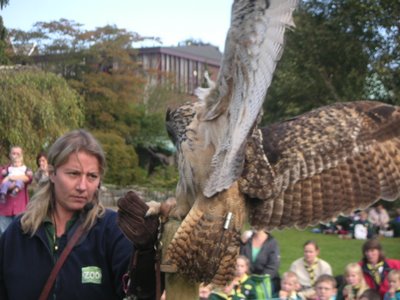Halloween & Pumpkins

Impressive isn't it? My very own Jack-0-Lantern. And I carved it myself! Ok, ok, I admit, I cheated a little. I used a stencil. Still, it was hardwork. And the pumpkin flesh was used to make some soup, which was delicious.
Without a doubt the most recognizable symbol of Halloween is a pumpkin carved into a Jack-o-Lantern. But as I just found out, the origins of pumpkin carving came from the Irish. For most of the general population it is known as Halloween and is a night for dressing up, telling ghost stories, having spooky parties, trick-or-treating and pumpkin carving. What most people don't know is that Halloween is actually based on an ancient Celtic holiday known as Samhain (pronounced "sow wan"), which means "summer's end".
It was the end of the Celtic year, starting at sundown on October 31st and going through to sundown November 1st. It was a night to honor loved ones that had passed on since the veil between their realm and ours is at it's thinnest on that night. It is also called the Witches' New Year, and the Last Harvest, though the religious significance of it has passed for the general public.
Fact: Did you know that pumpkins are not a vegetable - they are a fruit! Pumpkins, like gourds, and other varieties of squash are all members of the Cucurbitacae family , which also includes cucumbers, gherkins, and melons.
So there you go, a little bit of knowlegdge sharing on my part. So come Oct 31st, go carve yourself a pumpkin and have some nice pumpkin soup! Trick or treat .....







